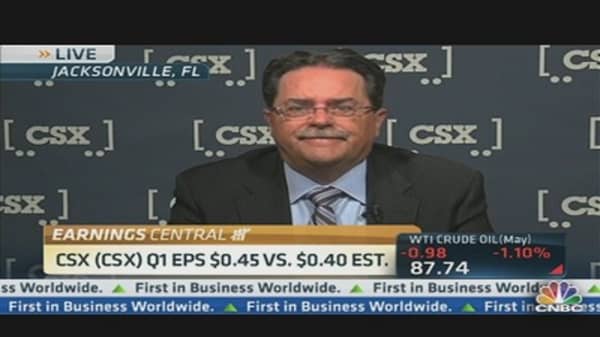But whether it can capture that growth all depends on how successfully CSX can run the details of its business. Over the weekend, tragedy struck in Quebec when a Rail World train loaded with crude oil derailed and crashed. The shale oil boom of recent years is projected to make the U.S. the world's largest oil producer by 2020, but all of that oil has to be transported from remote drilling sites to refineries.
Over the past five years, oil transported by train has grown fortyfold, and the Bakken is expected to produce 800,000 barrels per day by this fall. Pipelines take years to build and gain regulatory approval, which means that much of this new supply is currently being shipped via train. However, this weekend's accident now calls into question the relative safety of train transport versus pipelines like the proposed Keystone XL.
As a result, we are seeing option traders position themselves to profit from continued strength in rail companies, but with a fraction of the risk of owning shares outright.
In one huge trade on Monday, a trader bought 1,700 January 2015 25-strike call options for $2.50 each. This represents an expectation that CSX shares, which are currently trading at $23.30, will rise. In order to reach a break-even price of $27.50, the shares have to rally by 18 percent, which sounds like a lot. But keep in mind that the options do not expire for another 557 days.
If the shares log 8.6 percent growth by the end of 2013, and then another 8.6 percent in 2014, then they will have grown by 18 percent for the January 2015 expiration.
This presents a lot of time for something good to happen. And in terms of the downside risk, the max loss of this trade is only $425,000. If the trader wanted to take a bullish bet by getting long CSX stock, and then the company went bankrupt (an admittedly unlikely outcome), they would lose a lot more.
By buying call options, this trader has reduced the potential risk by 90 percent. This is a safe way to trade CSX that allows the trader to ride out any negative short-term news while covering their risk in case there begins to be a shift away from rail freight.












